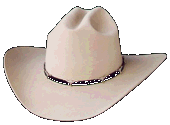Thursday, March 15, 2007
Life on Earth - Episode 07 - Victors of the Dry Lands
"The seventh episode is devoted to the evolution of reptiles. They are not as restricted as their amphibian ancestors, since they can survive in the hottest climates. The reason is their scaly, practically watertight skin. The scales protect the body from wear and tear and in the case of some species of lizard, such as the Australian thorny devil, serve to protect from attack. The horned iguana from the West Indies is also one of the most heavily armoured. The skin is rich in pigment cells, which provide effective means of camouflage, and the chameleon is a well known example. Temperature control is important to reptiles: they can’t generate body heat internally or sweat to keep cool. Therefore, they rely on the sun and areas of shade. The reptiles were the first vertebrates for whom internal fertilisation was essential, so they developed the watertight egg, which hatches fully formed young. The age of the dinosaurs is explored, and Attenborough surmises that it may have been climate change that led to their abrupt demise. Those that survived were water-dwellers, and the bull Nile crocodile is the largest reptile alive today. Snakes evolved when burrowing lizards lost their legs but returned above ground. The boa, puff adder and sidewinder demonstrate methods of locomotion, the egg-eating snake has an extreme example of a hinged jaw, and the lethal diamondback rattlesnake is described as the most efficient at dispatching its prey."
Subscribe to:
Post Comments (Atom)












No comments:
Post a Comment